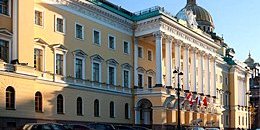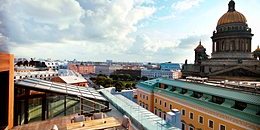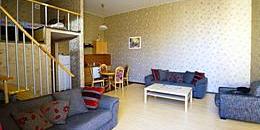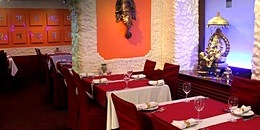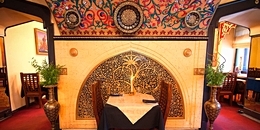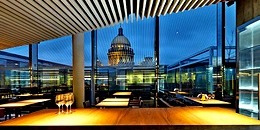Senatskaya Ploshchad (Senate Square)
The unique ensemble of Senatskaya Ploshchad comprises a panoramic view of the Bolshaya Neva, the Alexander Garden, the magnificent buildings of the Senate and Synod, St. Isaac's Cathedral, and the Admiralty. The compositional center and main ornament of the square is the Bronze Horseman. It was here in 1825 that the Decembrist Revolt, one of the most important events in Russian history, took place.

Senatskaya Ploshchad emerged in 1704 as one of the first squares in St. Petersburg. In 1710, the wooden St. Isaac's Church was erected on the shores of the Neva. This is now recognized as the predecessor of St. Isaac's Cathedral. Later, the church was moved to the marshy location where the current St. Isaac's Cathedral stands. From 1727, Senatskaya Ploshchad became a busy area thanks to the Isaac "floating bridge", forged every summer from ferries and barges, and replaced in winter by a wooden walkway across the ice. One of very few bridges across the River Neva at the time, it carried huge crowds everyday to and from Vasilevskiy Island.
In the south-eastern part of the area originally stood the half-timbered palace of Prince Alexander Menshikov, a close friend of Peter the Great. In 1744, a new Baroque palace was built in its place for the new owner, Chancellor Aleksey Bestuzhev-Rumin. The Senate was moved here from the Twelve Colleges after Catherine the Great took power, and in 1763, the area became known as "Senate Square". It was also during Catherine's reign that the Bronze Horseman, St. Petersburg's most famous monument, was erected, taking the French sculptor Etienne Maurice Falconet 12 years to create.

The Decembrist revolt, which was suppressed on the square on 26 December 1825, was the culmination of the accession crisis that followed the death of Alexander I. The Northern Society, a group of reformist guards officers campaigning for a constitutional monarchy and the abolition of serfdom, refused to swear loyalty to Nicholas I. Although they managed to muster around 3 000 troops to their cause, they were met on Senatskaya Ploshchad by a loyalist force roughly three times greater in number. After a tense day-long stand-off, the new Tsar ordered artillery to open fire on the rebels, driving them onto the ice of the Neva, which broke under the onslaught of cannonballs, drowning many of them and effectively ending the revolt. To mark the 100th anniversary of this oft romanticized event, the square was renamed Ploshchad Dekabristov in 1925, before reverting to its original name in 2008.

Under the direction of Italian architect Carlo Rossi, the Senate was completely rebuilt between 1829 and 1834. The new Senate was considerably expanded and decorated with a magnificent triumphal arch. In addition to the Senate, the Synod, then the governing body of the Russian Orthodox Church, was also transferred to the northern wing of the building. The building is now split between the Constitutional Court of the Russian Federation and the Boris Yeltsin Presidential Library.
| Metro stations: | Admiralteyskaya |
|---|---|
| Directions: | From the metro, turn left and left again onto Malaya Morskaya Ulitsa. Walk to the end of the street, then cross St. Isaac's Square and turn right past the cathedral onto Senatskaya Ploshchad |
| What's here? | Monument to Peter I (Bronze Horseman), Senate and Synod Building, Admiralty Building |
| What's nearby? | St. Isaac's Cathedral, Admiralty Embankment, Bolshaya Neva, Alexander Garden, English Embankment |

